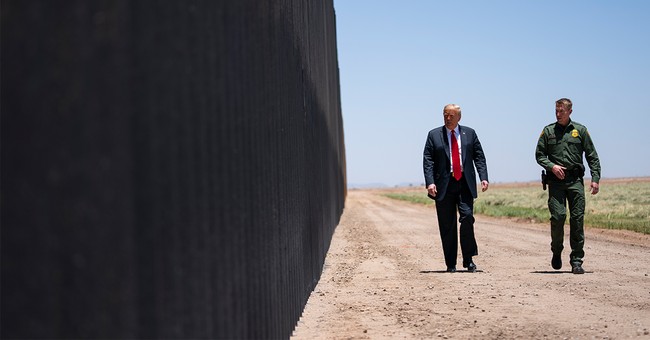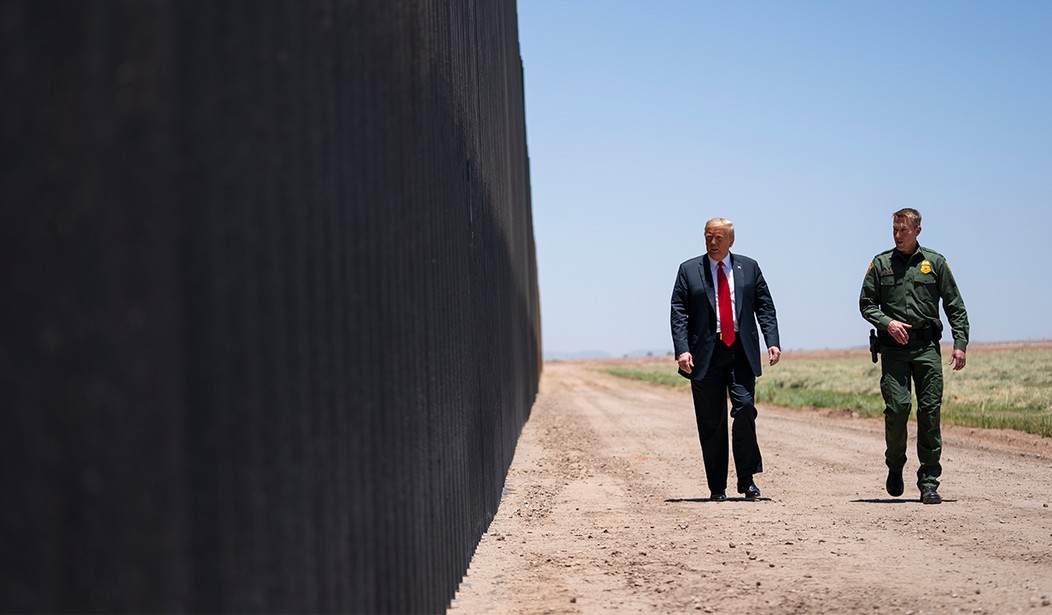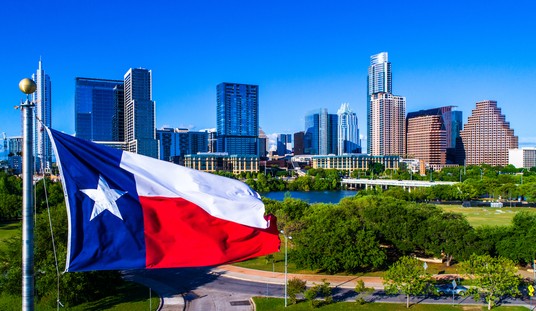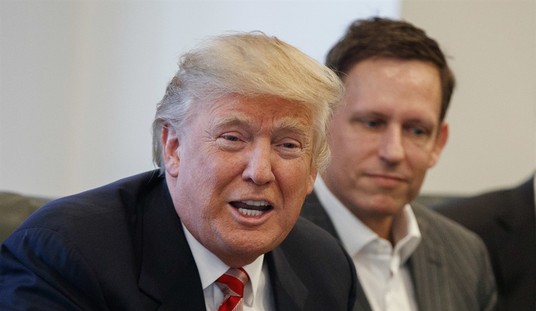
Opinion
Steve Bannon is one of those driven individuals. He has a knack for finding controversy wherever he goes. According to prosecutors at the Southern District of New York, Bannon’s latest “hot mess” concerns the finances of “We Build the Wall,” a fundraising campaign to helping to build portions of the US Border Wall privately.
The United States District Court of the Southern District of New York (SDNY) issued a 24-page criminal indictment against Steve Bannon, Brian Kolfage, Andrew Badolato, and Timothy Shea, the husband of the organization’s treasurer Amanda Shea, on two charges. Count one was a conspiracy to commit wire fraud using a series of vendor payments and transfers between non-profit organizations to misdirect funds for personal gain. Count two, the more substantive and damaging charge, alleges conspiracy to commit money laundering by these same four individuals and seeks the forfeiture of entire monies of the organization as ill-gotten gains.
Count One
The entire basis of the criminal charge, as spelled out in the indictment, is false representation. SDNY relies on a public statement by We Build The Wall that says they “would not take a penny in salary or compensation” and “100% of the funds raised … will be used in the execution of our mission and purpose”.
Basically, the prosecutors at SDNY have decided to enforce a zero-tolerance criteria against the accused, where even a penny spent on principals is capital fraud. Reading the indictment further, the purported method for the perpetration of count one was via the all too common 501(c4) methods of establishing vendor payments, transfers between non-profits, and asking someone to pay someone else instead of through the organization.
This zero-tolerance aspect that this case is based on seems a little weird for me. If one examines the records of almost every political action committee disclosure statement on OpenSecrets.org, you will find that the practice of “vendor” payments and PAC-to-PAC transfers goes on every day in every lobbying organization in the Washington swamp; and in much larger amounts. The percentage of acceptable overhead costs varies from minuscule to gargantuan, but they are always there. The wire fraud charge will make it or break it I think on the nuances of the phrase “used in the execution of our mission and purpose” and how that process of execution compares with other non-profit organizations.
That’s where this could get interesting because what’s to stop the defendants from subpoenaing the transaction records of every other high profile 501(c4) to demonstrate reasonable execution as part of such a trial? Honestly, this has the makings of one of those really cool super ugly expose cases about the entire non-profit world that will make for a multi-book Harvard Business School case study someday—scorched earth defense. Part of me wants to see it play out just because of the transparency we might gain into a very murky universe.
Count Two
Reading the money laundering conspiracy charge, I’m sort of struck by its hyperbolic reach. The riddle here is how come the Southern District of New York thinks that actions of four people, only two of whom are officially corporate officers of We Build The Wall, constitute a basis for declaring the entire organization an ill-gotten gain that justifies taking every penny out of every bank account?
That seems a bit of a reach to me. While Bannon is the chairman of the Advisory Committee, and Kolfage is the President, the organization has seven other advisors with substantial credentials and an operating staff. So the organization has what the Sarbanes-Oxley people would call, a degree of capacity to re-establish a future state with adequate internal controls. Why aren’t the prosecutors at SDNY focused on that outcome instead of the total asset forfeiture they are saying they want in the indictment?
The other question that begs itself when looking at this case is, why all the money? The basis of SDNY entering the case is that some people out of the 300,000 to 500,000 persons estimated to have donated to We Build The Wall, Inc. were residents of the district, and that is the basis upon which SDNY claims jurisdiction. In terms of monetary damages, even if SDNY proves that organization-wide money laundering was the racket being committed, doesn’t that mean only the fraction of the organization’s assets donated by residents of that jurisdiction less monies proven spent on the legitimate execution of mission and purpose are subject to recovery? You can do the forensic accounting on this. There are specific records on all of these donations. Some accounting firm is gonna make a mint figuring it out. If SDNY loses the case, doesn’t that mean we taxpayers wind up footing that bill?
Externalities
It’s important to note that the Southern District of New York, admittedly activist and hostile to President Trump’s agenda jurisdiction, has decided to impale Steve Bannon. Bannon himself may not be the world’s most likable DC theater character, but he is a lightning rod that serves a symbolic purpose to the election and the news cycle.
Bannon had been instrumental during the 2016 presidential campaign in making the border fence a lightning rod galvanizing the illegal immigration issue. It was part of the momentum that helped candidate Donald Trump win the election for the US Presidency. Funding “the Wall” has been a troublesome affair for the Trump Administration its entire first term. The issue also helped galvanize “The Resistance” against Trump’s domestic policy agenda. Frustration over funding for the fence system in the face of unyielding opposition in Congress drove some Americans to decide to privatize part of the process.
One of those was an impulsive GoFundMe campaign by Brian Kolfage om January 11, 2019, called “We Build the Wall.” The campaign has reportedly raised roughly $25 million since inception and was formalized on July 15, 2019, as the non-profit We Build the Wall Inc., a Florida-based IRC section 501(c4) registered as a social welfare organization.
Per their website is at webuildthewall.us, the stated mission and purpose of the 501(c4) is to (a) fund and manage the private construction of US border fencing and to (b) engage in education to “unite private citizens that share a common belief in providing national security for our Southern Border through the construction, administration and maintenance of physical barriers inhibiting illegal entry into the United States.”
Prior to becoming a Florida 501(c4), the organization worked with contractor Fisher Sand and Gravel to build a section of border fencing on private land in Sunland Park, New Mexico using donated funds.
Financially, the arrangement has benefitted the North-Dakota based contractor the most. Using the expertise gained from working on the charity project, Fisher Sand and Gravel qualified as a Department of Defense approved contractor and went on to successfully bid on a US Army Corps of Engineers $400 million contract to build a government paid for a section of wall along the southern perimeter of the Cabeza Prieta National Wildlife Refuge in Arizona. This section of the wall is scheduled to complete by the end of 2020. It has nothing to do with Kolfage’s group.
Since becoming a 501(c4), Kolfage’s organization says it will privately build another second section of the wall in Mission, Texas adjacent to the Rio Grande River. We Build the Wall, Inc. completed a part of this fence in January 2020 again using Fisher as the contractor; however, it’s been the subject of controversy. Reported signs of erosion after six months have raised questions. President Donald Trump is actually on record via Twitter on July 12, 2020, that he did not support this new piece of crowdsource funded private fencing.
“I disagreed with doing this very small (tiny) section of wall, in a tricky area, by a private group which raised money by ads. It was only done to make me look bad, and perhaps it now doesn’t even work. Should have been built like rest of Wall, 500 plus miles.” – @realDonaldTrump, 12-July-2020, https://twitter.com/realDonaldTrump/status/1282276752090431490
I don’t know about you, but the way I understand the English language, that’s not an endorsement. Not even the backhanded kind that happens on the weird scape of Twitter. An echo of how Trump and Bannon don’t really see eye-to-eye anymore? Yeah.
Perils of Scope Creep
Realistically, given that official government construction is now well underway, that’s probably the last piece of fencing Kolfage and friends should be involved with. Logically, We Build The Wall, Inc. should have declared victory, killed the donation links, and executed an orderly clearinghouse shutdown by giving donors the choice of returning their money or forwarding it to a menu of other conservative causes, of which there are a plethora.
But that’s not how 501(c4) ‘s usually go once they are gain inertia. That “educational” mission to preach to the faithful while doing less substantively is a temptation that besets the vast universe of special interest organizations. For a lot of them, with the original mission waning, the original organizers turn to their advisors. And in the case of We Build the Wall, Inc., in my opinion, those advisors have probably not advised Mr. Kolfage well. They should have told him to follow the lead of President Trump. But the board of advisors is chaired by Steve Bannon, whom everyone knows did not leave the President’s employ on the best of terms. He also has that streak in him that wants to be proven winner at the end of the day that a lot of DC pundits share as their form of drug addiction.
Still, the general counsel is former Kansas Secretary of State Kris Kobach, a firebrand conservative himself. Other advisors that were drawn to Kolfage’s cause include equally luminary conservative figures John Moran, Erik Prince, Robert Spaulding, Tom Tancero, David Alexander Clarke, and Curt Schilling.
The organizational decline pattern is painfully predictable. Administrative costs begin to rise. The Washington lobbying practices of engaging “vendors” and incurring rising operating expenses just to keep the money-raising infrastructure spiral going become an organizational trap. The biggest vendor benefactor these days is the vast internet advertising industry was paying to create echo chambers to influence donors, or voters claim pirate’s fortunes at microchip speed.
Over time, as the mission becomes listless, the purpose of the spending becomes more and more muddled. Less and less justifiable to outsiders. The apparatus used for non-core mission purposes. And in the case of an organization taking in funds across an entire country over the internet, the potential that listlessness will be misused and seen by authorities as wire fraud, whether it is or not.
The controls, oversight, and suspicion of authorities over such organizations like these are intense for a reason. They are rife with temptations that beguile the frailty of human character. If one is driven with the belief the end justifies the means, that fragility is a tripwire with a bear claw trap attached to it. It’s a vulnerability best avoided.
I think that’s kind of the lesson here. If you have a cause, and it doesn’t matter what that cause is, left or right, it’s important to stay true to the core of it. Even more important, know when you are done. That old and wise admonition about knowing where your goal line is and ending on a win-win very much applies here.
Mr. Kolfage should have recognized that once Fisher Sand and Gravel won a real government contract a year ago, it meant Donald Trump had the ball and was running with it. He should have smiled and called it a day.













Join the conversation as a VIP Member